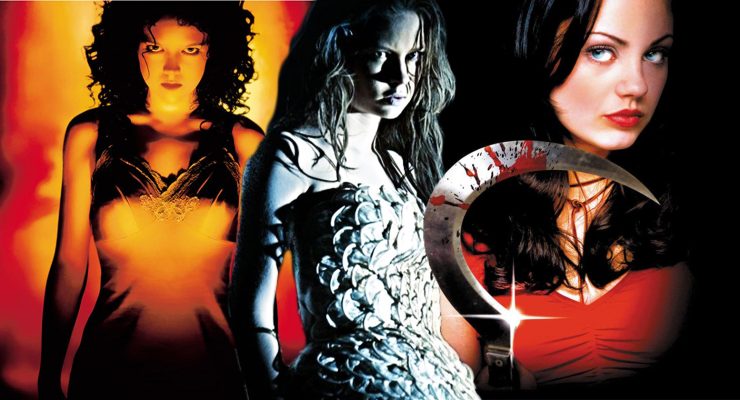What Have You Done to Solange? a.k.a Who’s Next? (Italian: Cosa avete fatto a Solange?), 1971.
Directed by Massimo Dallamano.
Starring Fabio Testi, Cristina Galbó, Karin Baal, and Joachim Fuchsberger.
SYNOPSIS:
A teacher who is having an affair with one of his students takes her out on a boat when they witness a knife killing on shore. As more gruesome murders start to occur the teacher suspects that he may be the cause of them.
Cosa avete fatto a Solange? (Dallamano, 1972) is an Italian giallo starring Fabio Testi, Cristina Galbo, and Karin Baal. Cult film enthusiasts may be interested to know that it also stars Camille Keaton – of I Spit On Your Grave (Zarchi, 1978) infamy – playing, in some respects, a prototypical version of Jennifer Hills (more on her later).
The film centres on a series of schoolgirl murders, all of which have been carried out in a particularly nasty fashion, and is set in an oddly leafy looking London. The film presents a peculiar take on the genre’s format as it mixes the traditional forms of giallo all’Italiana with a more rural style evident in Don’t Torture A Duckling (Fulci, 1972) and The House With Laughing Windows (Avati, 1976). The outcome is a piece that swaps the dizzying heights of the fashion world (a theme so often explored in this genre) with what appears to be a stereotypical take on English life. What is produced is a fairly relaxing atmosphere, juxtaposed against a series of vicious killings. One can see Dallamano’s attempt to play with the genre’s conventions but whether or not they pay off is something that I would like to discuss further.
I am not professing to be an expert on the genre, indeed there are at least 160 ‘official’ giallo titles and my viewing figures are nowhere near that number. However, anyone who has seen a few ‘typical’ giallo’s (for this review, I am talking about the likes of Strip Nude For Your Killer [Bianchi, 1975]), and a few atypical ones (for example, the Fulci and Avati mentions above), can see that Dallamano places his film somewhere in between these two poles. Indeed the ‘fashion’ of London is apparent to an extent – it was intriguing to see shots of the capital in the 1970’s – but the overwhelmingly rural feel of the film which, in my opinion, is a flaw of Dallamano’s, pulls it away from the aforementioned heights of the fashion industry and into a more stable and pure environment. What the film does manage to do quite well is take an exciting giallo storyline and place it in a sort of BBC Sunday night detective drama setting.
A lot of reviewers have really hyped Solange, and perhaps I am blind for not seeing the innovator in Dallamano, but I just could not help but feel that this story would have benefitted from being set in a more glamorous environment, if only to give the viewer something more interesting to look at as old schools and riverbanks can get a bit tedious. Admittedly the beautiful actresses make up for it but I am trying to write a serious analysis here! Perhaps if the film had actually been set in London (i.e. All The Colors Of The Dark [Martino, 1972]) it would have looked a bit more eye-catching, and whilst image is not everything it is hard to watch a film belonging to a genre that is so image-oriented that does not have any real ‘image’. For me the rural setting did not work, part of the excitement of the giallo is the urban setting which allows for chases in underground car parks, explorations of fancy nightclubs, and a relentless barrage of ridiculous sunglasses. The film does not have that, what it does have however is a very good narrative.
Don’t let the above criticism fool you, What Have You Done To Solange? is a fairly accomplished film that should keep even the most hardened of giallo fanatics guessing until the very end and is worth watching. Indeed, the contrast between rural scenery and violent murder creates interesting images of life and death, and the film is not a simple compilation of murders, a trap that some of the more simplistic gialli fall into. In saying that however, Solange is also not an incredibly intelligent film, and its plot is not as complex as some other gialli, but it does have a certain feel about it, perhaps it is all the English accents. It feels like it is trying very hard to be a good film, and it almost achieves it. The film boasts a large cast of competent actors, including Fabio Testi, who is always good; and the beautiful Cristina Galbo, who is a visual treat. Camille Keaton plays a very creepy Solange who puts you on edge. One can see in her role some of the techniques that she would later use in the character of Jennifer Hills in I Spit On Your Grave.
Perhaps it is a mistake to analyse a film based on the characteristics of its genre, but isn’t that the whole point of the giallo? It is a genre that is hard to concretely define, and it is only through studying its films that one can truly explain it. To me, What Have You Done To Solange? is not a great representation of the giallo on the whole. Rather, the film takes aspects of the genre and creates its own style. As a standalone film this works well, but when compared to other rustic gialli, such as The House With Laughing Windows, it doesn’t quite match up in my opinion.
Robert Cowlin
Movie Review Archive











